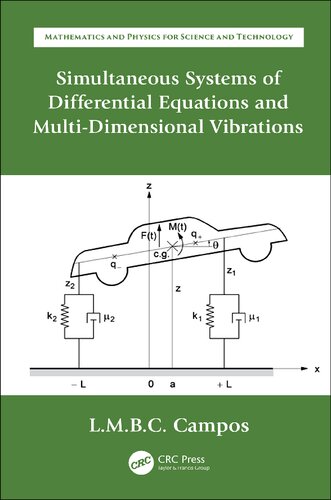

Most ebook files are in PDF format, so you can easily read them using various software such as Foxit Reader or directly on the Google Chrome browser.
Some ebook files are released by publishers in other formats such as .awz, .mobi, .epub, .fb2, etc. You may need to install specific software to read these formats on mobile/PC, such as Calibre.
Please read the tutorial at this link: https://ebookbell.com/faq
We offer FREE conversion to the popular formats you request; however, this may take some time. Therefore, right after payment, please email us, and we will try to provide the service as quickly as possible.
For some exceptional file formats or broken links (if any), please refrain from opening any disputes. Instead, email us first, and we will try to assist within a maximum of 6 hours.
EbookBell Team

0.0
0 reviews
Simultaneous Differential Equations and Multi-Dimensional Vibrations is the fourth book within Ordinary Differential Equations with Applications to Trajectories and Vibrations, Six-volume Set. As a set, they are the fourth volume in the series Mathematics and Physics Applied to Science and Technology. This fourth book consists of two chapters (chapters 7 and 8 of the set).
The first chapter concerns simultaneous systems of ordinary differential equations and focuses mostly on the cases that have a matrix of characteristic polynomials, namely linear systems with constant or homogeneous power coefficients. The method of the matrix of characteristic polynomials also applies to simultaneous systems of linear finite difference equations with constant coefficients.
The second chapter considers linear multi-dimensional oscillators with any number of degrees of freedom including damping, forcing, and multiple resonance. The discrete oscillators may be extended from a finite number of degrees-of-freedom to infinite chains. The continuous oscillators correspond to waves in homogeneous or inhomogeneous media, including elastic, acoustic, electromagnetic, and water surface waves. The combination of propagation and dissipation leads to the equations of mathematical physics.